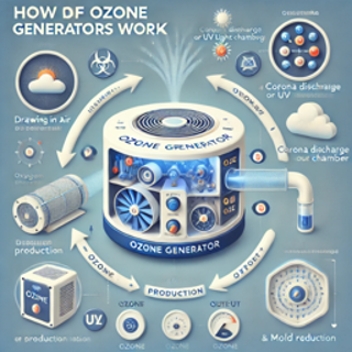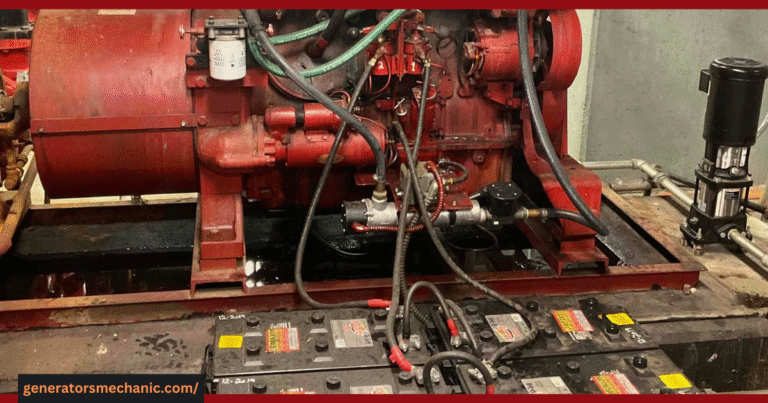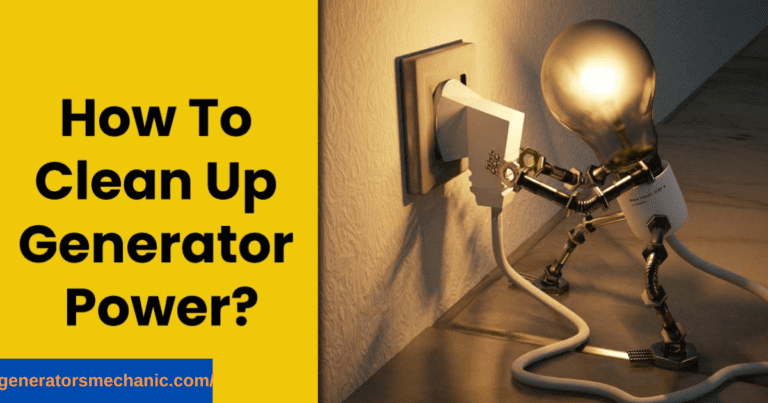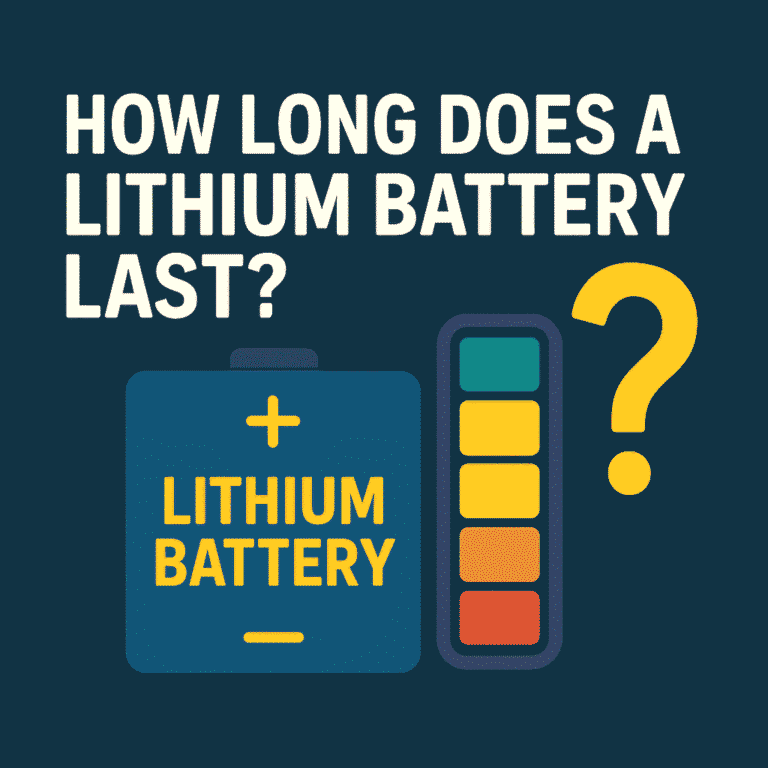How Does a Generator Transfer Switch Work? 5 Powerful Reasons It’s a Smart Choice for Your Home
Understanding how does a generator transfer switch work is key to ensuring a safe and seamless power backup setup. A transfer switch acts as the bridge between your generator and your home’s electrical system, allowing you to switch from utility power to generator power without dangerous backfeeding. When activated, it automatically or manually reroutes the electrical load to the generator, keeping essential appliances running during an outage.
For a clearer picture, a how does a generator transfer switch work diagram can help visualize the process. It typically shows the connection between the generator, transfer switch, and home circuit panel, illustrating how power flows depending on whether utility service is available or not. This not only helps in installation but also improves safety awareness for homeowners.
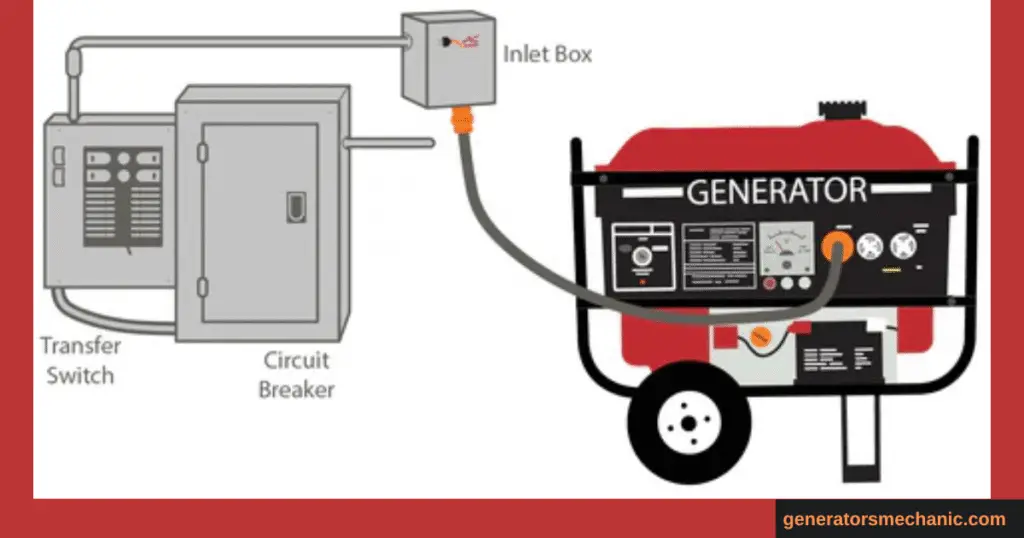
Alright, let’s dive right into the heart of the matter. A generator transfer switch, in essence, is like the referee in a game, deciding when the backup generator takes the field. It’s an electrical device specifically designed to safely transfer the electrical juice from the utility lines to the generator, ensuring no mix-ups that could lead to a foul play. Imagine you’re watching the big game, and the power goes kaput. This device quickly switches your power source from the main grid to the backup generator without letting both teams play at the same time—preventing any chance of a backfeed mess that could put utility workers at risk.
Now, delving deeper, there are two main players in this game: manual or automatic transfer switches. Opting for manual switches might save you some dough upfront, as manual switches are less expensive, but they require you to step up and make the switch manually. On the flip side, automatic transfer switches are like having an all-star player who can jump in and handle everything seamlessly, ensuring uninterrupted power without you having to lift a finger.
So, depending on the situation, whether you want hands-on control or a worry-free transition, there’s a solution tailored just for your needs.
Understanding the Basics of Generator Transfer Switches
. A transfer switch acts as a bridge, directing power from the generator to your circuits when the main grid goes down, and switching back once normal power is restored. This ensures your home receives power without dangerous backfeeding, which could harm utility workers or damage appliances.
A transfer switch for generator setups is not only about safety—it’s also about convenience. Instead of running multiple extension cords, the transfer switch allows you to power selected circuits directly, keeping essential appliances like refrigerators, lights, and heating systems running smoothly. Whether manual or automatic, it’s an essential piece of equipment for anyone who relies on a generator during outages.
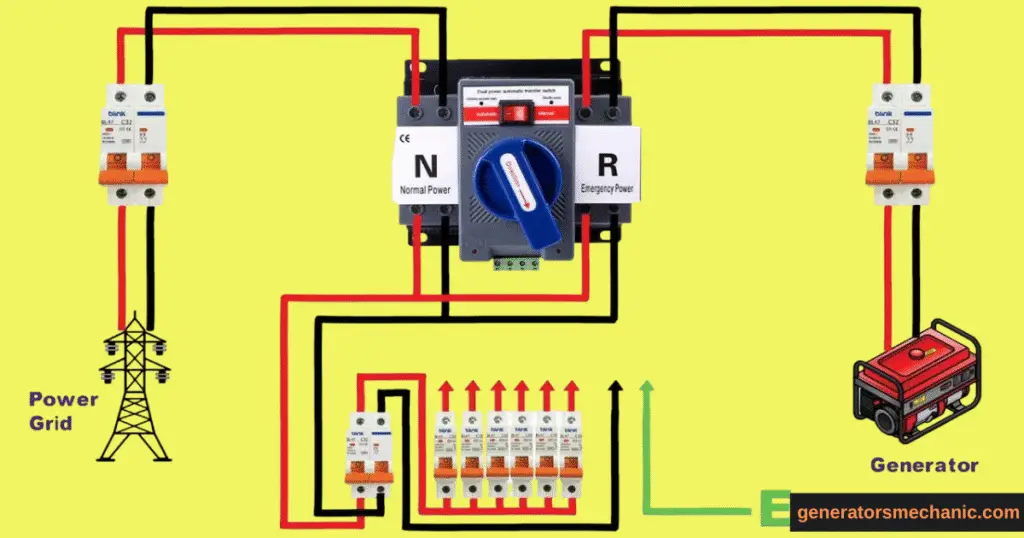
Peeling back the first layer, a generator transfer switch is crucial for more than just flicking from one power source to another.
It’s about keeping everyone safe and ensuring that the flow of power remains as steady as my grandma’s hand in a game of cards. This gear acts as the guardian, making sure the electricity from your generator doesn’t decide to take a dangerous trip back into the power lines, which can be hazardous for those fixing them. It’s also all about keeping that uninterrupted power flowing smoothly, without a hiccup, keeping lives comfortable and businesses running during outages.
The Critical Role of Transfer Switches in Power Management
Talking about keeping things running, the transfer switch is essential, like having water in the desert. Without it, you could be looking at some serious mess in your building’s electrical system, not to mention putting your folks and utility workers trying to restore power in a heap of trouble.
For it to do its job, matching it to your generator’s output and your electrical needs is like matching your belt to your shoes; it’s got to be just right. Plus, getting it professionally installed means less headache for you and more safety all around.
Differentiating Between Manual and Automatic Transfer Switches
When deciding between manual and automatic switches for commercial use, it’s like choosing between driving stick or automatic. Both will get you there, but your choice depends on how you want to roll. Manual switches need you to step in and make the switch, kind of like rolling up your sleeves and getting to work.
However, automatic switches are the smooth operators, switching power sources without bothering you for help. Both serve the same end—keeping the lights on when the grid can’t.
Manual Transfer Switches: When Human Intervention Guides the Path
Let’s get into the nitty-gritty. Manual transfer switches are like having a manual car—requires more from you, but some folks prefer that control. The deal here is, when the utility power goes kaput, you’re the one stepping up to manually switch the power to the generator.
It’s all on you to monitor and manage, ensuring that power keeps flowing where it’s needed without putting utility workers or your building’s electrical system at risk while aiming to restore power quickly.
Automatic Transfer Switches: The Art of Seamless Power Transition
On the other flip of the coin, automatic transfer switches are like the cool, calm, and collected friend who’s got everything under control. When the utility grid goes down, this clever device automatically switches to generator power, ensuring an uninterrupted power supply without you having to break a sweat.
It’s all about keeping things smooth and seamless, making sure nobody even notices there’s been a switch. It’s the magic behind keeping lights on and machines running without skipping a beat.
The Various Types and Applications of Generator Transfer Switches
. A transfer switch is a critical component that safely shifts the power source from your utility line to your generator, preventing dangerous backfeeding and protecting both your equipment and utility workers.
There are different types of transfer switches to suit various needs, with the Automatic Transfer Switch being the most convenient option. It detects a power outage instantly and switches the power source to your generator without manual intervention, making it ideal for homes, businesses, and critical facilities. Other options include manual transfer switches, which require a hands-on approach but offer more control for smaller setups. Whether for residential, commercial, or industrial applications, choosing the right transfer switch ensures reliability, safety, and efficiency in your backup power system.

Digging deeper, generator transfer switches aren’t a one-size-fits-all deal. With manual transfer switches and automatic transfer switches on the table, choosing becomes a matter of knowing your specific needs and preferences.
It’s like picking the right tool for the job, ensuring you’ve got the best match for your setup to keep that power flowing exactly when and where it’s needed.
Exploring the Diverse World of Transfer Switches
Trudging deeper into this world, it’s clear that a transfer switch is essential for anyone relying on a generator, be it for backup or standoff power. Without this critical piece of gear, you’re basically playing with fire—risking damage to your place’s wiring, possibly hurting folks, and even creating hazards for those utility workers hustling to get the lights back on. Making sure your transfer switch is in harmony with your generator’s song is paramount, as is ensuring it’s properly set up in your electrical ensemble.
Utility-to-Generator: Ensuring Reliable Backup Power
Here’s the deal with transferring from utility power to generator power. It’s all about making sure you’ve got a reliable backup power source ready to take over the moment utility power bows out. This involves transitioning the electrical load to the generator power seamlessly and might require you to manually switch it up, depending on your setup. The goal? Keeping that power uninterrupted, ensuring everything from your lights to your fridge keeps humming along happily during an outage.
Generator-to-Generator: Maximizing Resource Efficiency
Now, jumping from one generator power to another? That’s playing at a whole different level, aimed at squeezing the most out of your resources. Say one generator is running low or needs a break; having the option to switch to another without losing power is like having an ace up your sleeve. It’s a strategy for those looking to maximize efficiency, ensure redundancy, and maintain an uninterrupted power supply no matter the circumstances.
The Significance of Transition Types in Transfer Switches
When it comes to keeping the lights on, understanding the kind of transitions your transfer switch can perform—manual transfer switches and automatic—plays a big role. Manual switches, being the less expensive option, demand you to physically flip the switch, moving the power from the utility company to your generator. Automatic switches, however, take care of the switch seamlessly, without you having to intervene, making them crucial for safety and convenience during those critical moments when every second counts.
Open Transition: Understanding the Basics
If we’re talking “open transition,” we’re looking at the standard switcheroo type. When the power goes, there’s a brief, intentional break in power during the switch from the utility company to generator power. It’s like blinking; you’ll miss it if you’re not paying attention, but it ensures a safe transfer without any backflow drama.
Closed Transition: A Smooth Power Passage
“Closed transition” is like the smooth operator of power transfer. This method is all about changing the source from utility to generator power without you noticing a blink of an eye in interruption. This type requires that the generator and utility power play nice for a few seconds, overlapping to ensure there’s no power dip. Ideal for situations where even a millisecond of power loss is too much to bear.
The Necessity and Benefits of Installing Generator Transfer Switches
A transfer switch safely connects your generator to your home’s electrical system, ensuring that power flows only where it’s needed without risking damage to appliances or the grid. This not only protects your equipment but also keeps you and your property safe during outages.
For those who prefer a straightforward setup, a manual transfer switch offers a reliable and cost-effective solution, giving you control over which circuits receive power during an emergency. Beyond safety, installing a transfer switch adds convenience, eliminating the need for messy extension cords and making generator operation seamless during critical moments.
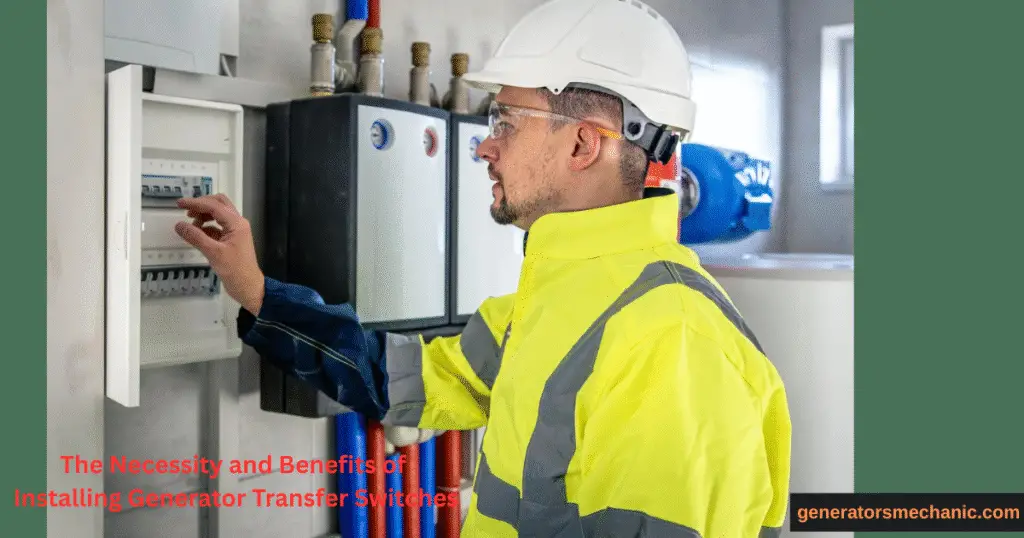
The real deal with slapping in a generator transfer switch ain’t just about making the switch flick easier during a blackout. It’s about keeping things safe and slick, like a cool breeze on a hot day. This little gadget acts like a bouncer at a club, deciding who gets in and who stays out, ensuring your home doesn’t accidentally send power zipping back down the power lines, which could be a real shocker for folks working on them. Plus, it keeps your lights on and your fridge running smooth like it didn’t even notice there was a hiccup in the power supply.
Safety Measures: A Non-Negotiable Aspect
Installing a transfer switch ain’t just some fancy addition; it’s like the seatbelt of your electrical system. Without it, you’re just cruisin’ for a bruisin’. This thing is what keeps your genset from going rogue and pushing electricity back to the grid. Imagine that – your generator trying to power the whole neighborhood on its own! This could put line workers at risk. So, when we talk safety, it’s not just about keeping the lights on; it’s about making sure everyone goes home safe at the end of the day.
Ensuring a Seamless Power Supply: The Ultimate Goal
Let’s paint a picture: you’re knee-deep in the season finale of your favorite show, and bam – the power cuts out. But imagine, just as you start to grumble, the lights flicker back on, and your show’s back like nothing happened. That’s the magic of a transfer switch. Whether it’s a manual version where you gotta hustle to switch the juice from utility power to generator power or an automatic one that flips the switch without you lifting a finger, the goal is the same: keeping your power steady without missing a beat.
Installation Insights: From Preparation to Professional Installation
. A transfer switch is the critical link between your generator and your home’s electrical system, allowing you to safely shift power from the grid to your generator during an outage. This ensures that your appliances receive consistent, controlled electricity without backfeeding into the utility lines—a crucial safety measure.
For those looking for hands-on solutions, a manual transfer switch for generator setups offers an affordable and reliable option. With the manual switch, you can decide exactly when to transfer power, giving you more control over energy usage. Whether you opt for a manual or automatic model, having a professional electrician handle the installation ensures proper wiring, adherence to safety codes, and peace of mind when the lights go out.
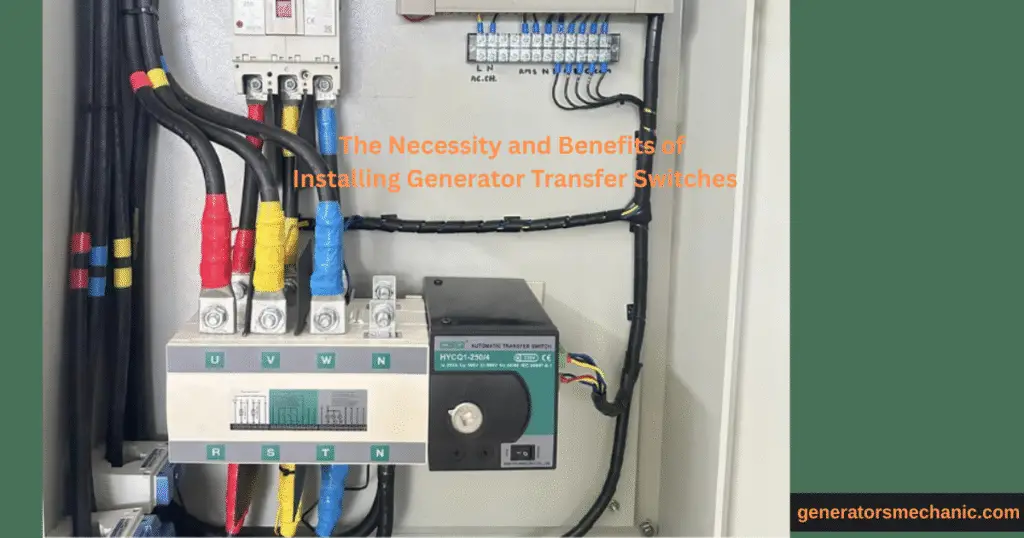
Now, putting in one of these switches might seem like a DIY project for a sunny Saturday afternoon, but trust me, it’s a job for the pros. Sure, it might cost a bit more to have a qualified electrician do the dirty work, but they’ve got the smarts to hook everything up right. They’ll get your generator talking nicely to your home’s electrical system, without any awkward pauses or miscommunications. This way, you get to sit back, enjoy a cold one, and let the experts handle the heavy lifting.
Step-by-Step Guide to Preparing for Installation
Before you get all gung-ho about installing a transfer switch, there’s some prep work to do. First off, you gotta figure out what you wanna keep powered during an outage. Not everything needs to stay on, just the essentials. Once you’ve got that sorted, you’ll know what size switch you need, making shopping a breeze. But remember, this is just the warm-up; the main event is leaving the install to a pro.
The Importance of Professional Installation for Optimal Performance
Getting a transfer switch slapped in isn’t about just plugging in a few wires and calling it a day. It’s about making sure it’s done right, keeping your home humming during a power cut without any hiccups. A qualified electrician knows all the ins, outs, and safety protocols to make sure your switch works flawlessly, keeping your generator ready to jump into action the moment your power flickers. It’s like having a superhero on call, but instead of a cape, they carry a toolbox.
Financial Considerations: Cost Analysis of Manual vs. Automatic Transfer Switches
it’s important to also weigh the financial differences between manual and automatic options. A transfer switch serves as the bridge between your generator and electrical panel, ensuring power flows safely during an outage. Manual switches are typically more budget-friendly, but they require you to physically engage the system, which can be inconvenient in bad weather or emergencies.
In contrast, an automatic transfer switch for generator setups offers seamless switching the moment utility power fails. While these systems cost more upfront, they provide unmatched convenience, safety, and speed—qualities many homeowners find worth the investment. Ultimately, the choice comes down to balancing your budget with your need for reliability and ease of use.
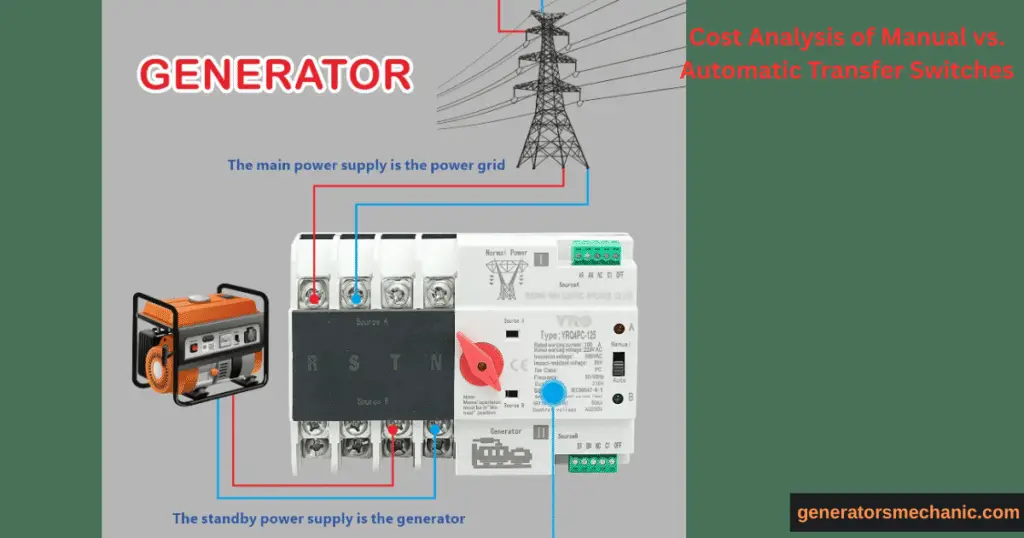
Talking turkey about the cost of manual vs. automatic transfer switches is like looking at two sides of the same coin. On one hand, manual switches might make your wallet happier upfront, but they’ll have you jogging to flip the switch when the lights go out. Automatic switches, though, they’re like having a butler for your power; they keep things classy and seamless but ask for a bigger tip. It’s all about weighing the convenience against the cost and figuring out what’s going to make your life easier without breaking the bank.
Investing in Manual Transfer Switches: A Cost-Effective Solution?
Alright, let’s chat about manual transfer switches. These bad boys are like the stick shift of generators – they require a bit of manual effort but get the job done. When the power bows out, you gotta hustle, start the generator, and then manually switch your electrical loads from the grid to your generator. It’s a hands-on operation, but it’s straightforward and keeps costs on the down-low. It’s perfect for those who don’t mind a bit of legwork to save some cash.
Automatic Transfer Switches: Assessing the Value Against the Cost
Now, flipping over to automatic transfer switches, we’re entering the realm of convenience. The moment your power decides to take a nap, this clever device senses it, kicks your generator into gear, and swaps the power source from the grid to your generator faster than you can say “blackout.” No sweat, no fuss. Sure, it’s a steeper investment, but for the peace of mind and ease of use? Some would say it’s worth every penny.
Legal Landscape: Navigating Through Requirements and Permits
. A transfer switch ensures that your home or business safely transitions between utility power and generator power without dangerous backfeeding into the grid. This not only protects your electrical appliances but also safeguards utility workers during an outage.
Before starting the project, it’s important to check local building codes and secure any required permits. Professional electricians are often familiar with these regulations and can make the process smoother. If you’re curious about how to install a transfer switch, it typically involves connecting the switch to your home’s electrical panel and wiring it to your generator, a task best handled by a licensed professional to ensure safety and compliance.

Before you even think of getting a generator transfer switch hooked up, there’s a whole tangle of legal strings to sort out. You can’t just decide to install one of these babies on a whim; there are permits to get and rules to follow. It’s all about keeping everyone playing safe and fair. Getting these permits might feel like a hoop-jumping competition, but they’re there to make sure everything’s above board and that your shiny new switch doesn’t land you in hot water. So, do your homework, and let’s keep things legal, alright?
Understanding the Legal Obligations Associated with Transfer Switch Installation
Getting a transfer switch installed isn’t just about plugging it in and flipping a switch. Proper installation is crucial, not just for keeping the lights on without a hiccup but for keeping it on the up and up with the law. It’s like playing in a sandbox; you gotta know the rules to stay inside the lines. The last thing anyone needs is to get slapped with fines because they missed a step or two.
So, if you’re thinking about getting one of these bad boys set up, remember it’s serious business. It’s not just about safety but keeping your generator’s warranty valid and avoiding dangerous situations like electrical backfeeding. That’s why getting pros like those at Paschal to handle the job is a smart move. They know the ins and outs, making sure your setup is up to snuff.
The Process of Acquiring Necessary Permits
Before you can even think about switching on that generator with a shiny new transfer switch, there’s a bit of homework to do – securing permits. It’s like asking for permission before you change the game rules at the playground. You gotta make sure everything you’re doing is by the book, which means staying on the right side of local regulations and safety standards.
Skipping this step can land you in hot water, with civil penalties that are no joke. And let’s not forget, only a certified electrician should handle the installation. They’ve got the skills, following all safety protocols and manufacturer’s guidelines to a T. It’s kinda like making sure you have the right tools and instructions before you try to put together that fancy new grill.
Frequently Asked Questions: Enlightening the Path Towards Informed Decisions
You got questions? Well, I’ve got answers. First off, when the power’s back, the transfer switch automatically switches your place back to utility power and tells the generator to take a break. Now, about running a generator without a transfer switch: sure, it’s possible, but safety reasons alone make it a solid no-go. Imagine trying to run all your gadgets off extension cords—it’s just not practical, nor safe. And before you even think about firing up that generator, always turn off the main breaker to avoid sending electricity on an unintended round trip. As for DIY installations, they’re doable if you’ve got the electrical chops. But let’s be real, it’s usually best to leave it to the pros.
Why Do Generators Need a Transfer Switch?
So, why do generators need a transfer switch? It’s kinda like asking why you need a remote for your TV. Sure, you could get up to change the channel, but why would you? Standby generators are always on deck, waiting for the power to cut so they can jump into action without skipping a beat. Unlike portable generators, which don’t strictly need a transfer switch, it’s a smart move to have one. It lets you power up the house through the circuit breaker panel—no fumbling with extension cords required. For homes and businesses, it’s about keeping essential appliances running smoothly. It’s a game-changer, providing convenience and safety.
How to Choose the Right Transfer Switch for Your Generator?
Choosing the right transfer switch for your generator is like picking the perfect toppings for your pizza—it’s gotta match your taste. When the utility grid takes a nap and you lose power, the transfer switch steps in to transfer the electrical load to your generator. Now, whether it shifts all your electrical loads or just the critical ones, like keeping the lights on or the medical devices running, depends on what you’ve set up. It keeps the interruption in the power supply to a minimum, ensuring you’re not left in the dark. Think of it as a bridge, carrying the electric load between two sources, making sure that your backup power solution keeps things running without a hitch.
The Final Verge: Embracing the Importance of Generator Transfer Switches
Let’s get down to brass tacks. A transfer switch is a device, not just a fancy accessory for your home’s electrical panel. It’s the linchpin in your backup power setup, acting as the gatekeeper that ensures the electricity from your generator doesn’t go wandering into places it shouldn’t, like back into the grid. Can you imagine the chaos that could cause, especially for the folks working on the lines? Nope, we don’t want that. Plus, it ensures your source of power is flipped seamlessly without you having to lift a finger. All in all, it’s about keeping things safe and ensuring you don’t miss a beat when the lights go out.
Beyond Functionality: Recognizing the Crucial Role in Ensuring Safety and Continuity
Let’s talk about the MVP in our generator setup— the transfer switch. It’s more than just a piece of equipment; it’s the guardian of your peace of mind and safety. By effectively managing power sources, it ensures your home stays lit up even when the wider grid throws a fit. The real beauty of it? You don’t need to mess around flipping switches on the transfer switch or deal with portable power in a panic. It’s got your back, keeping things running smooth and letting you focus on what matters, all while keeping safety in the front seat. In short, it’s not just about keeping the lights on; it’s about keeping you safe while it does it.


